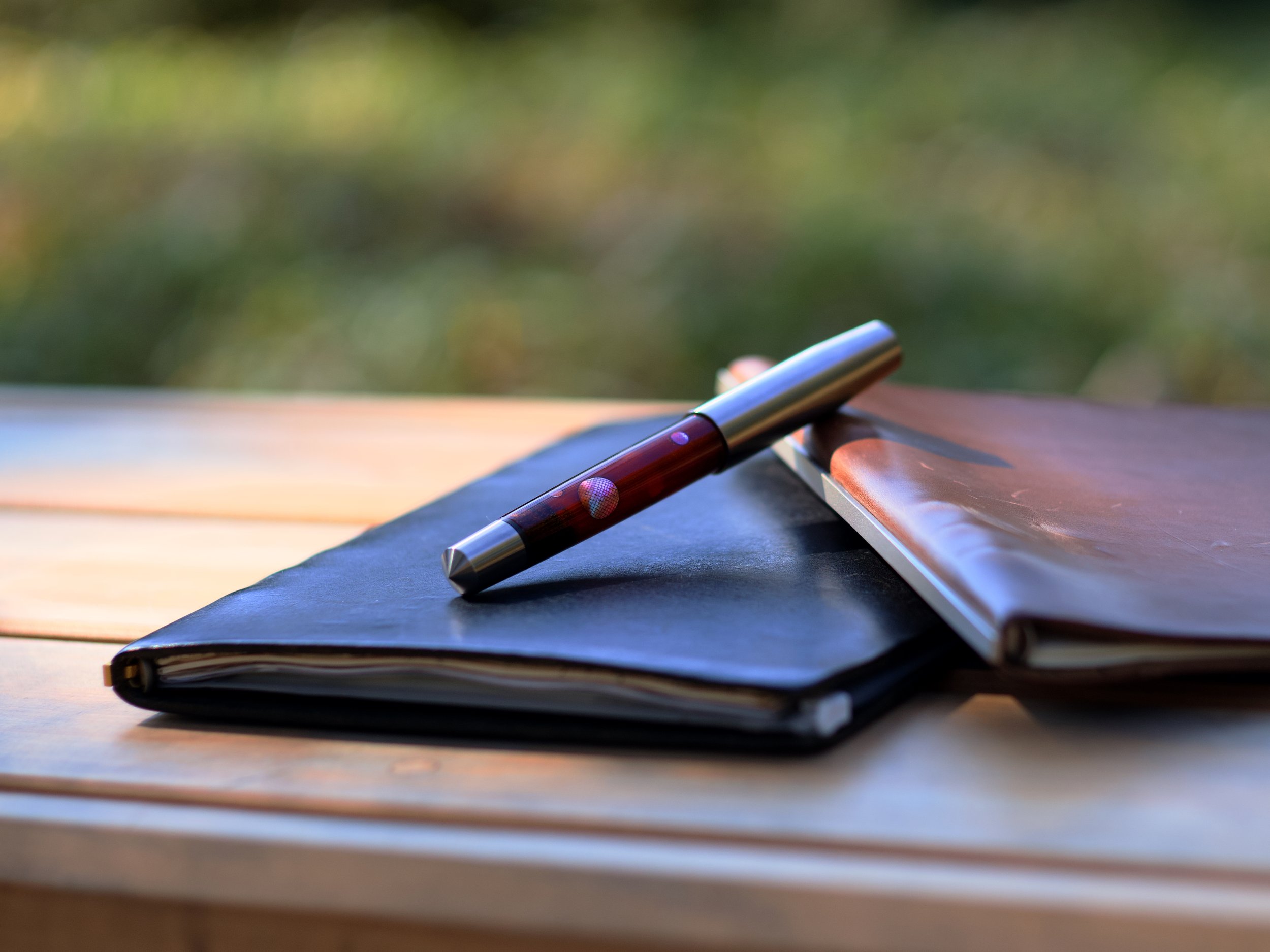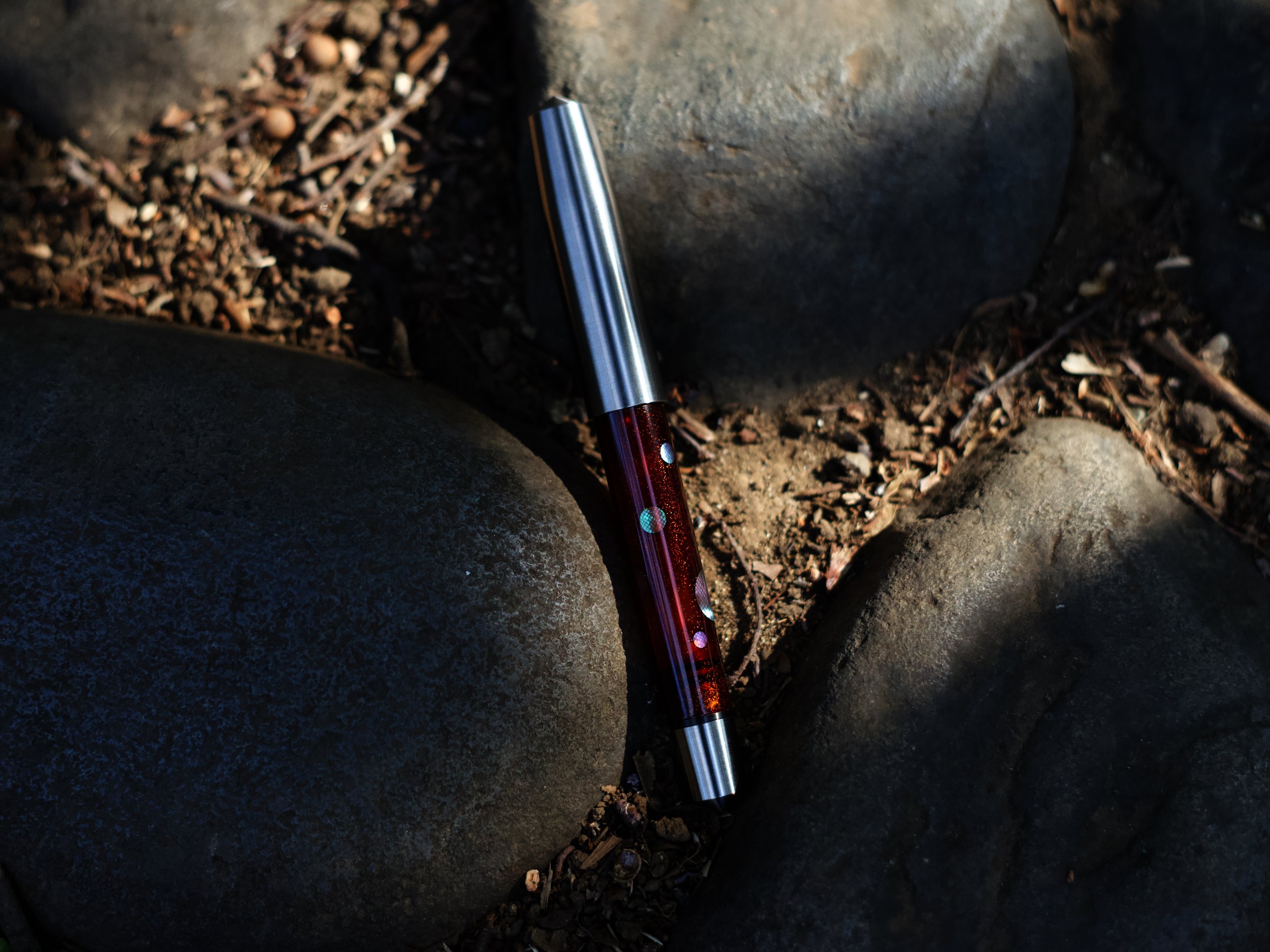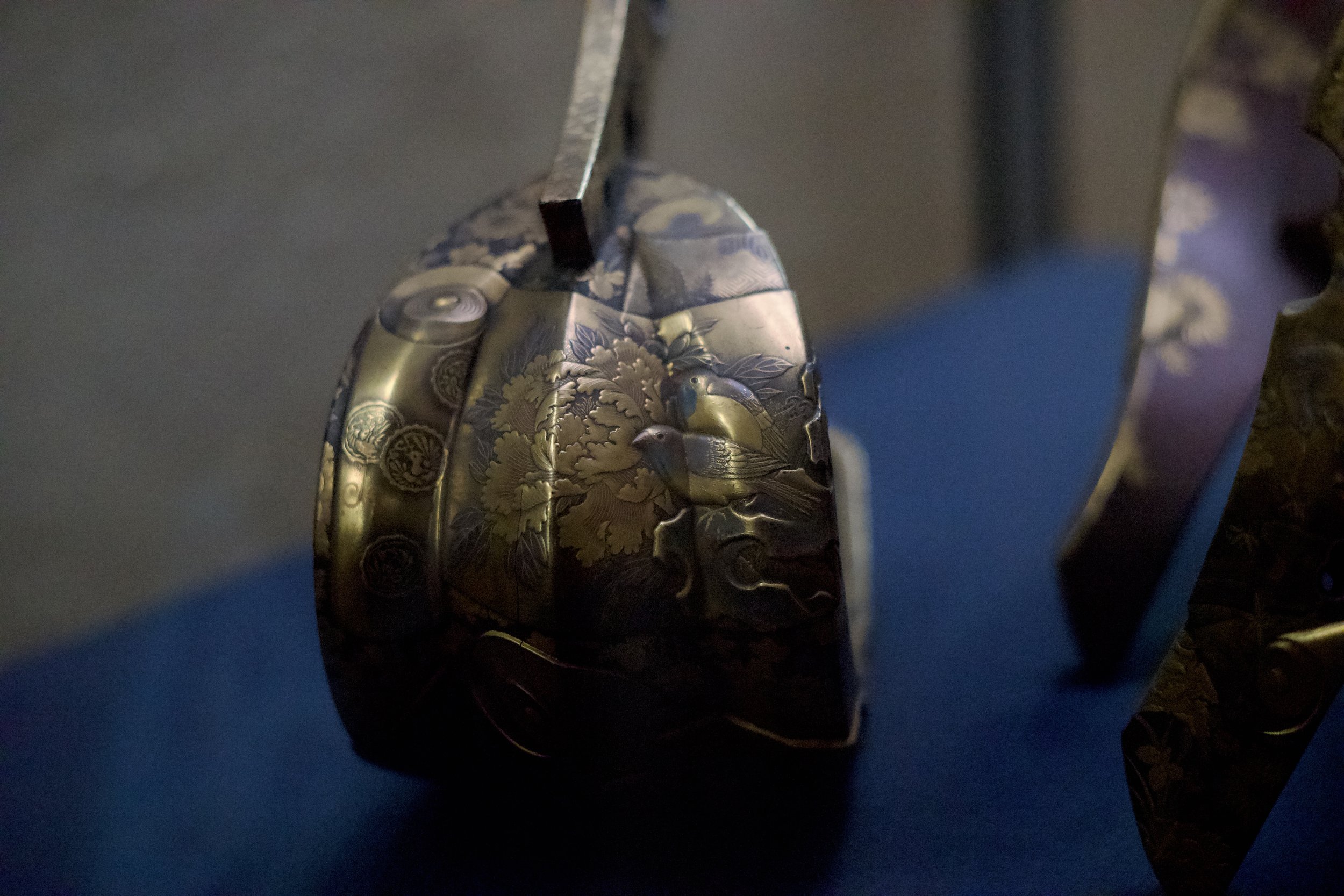An In Depth Introduction to Urushi Lacquer Art
Sakura Maki-e Box, Tokyo National Museum
What is Urushi?
Urushi (漆), the Japanese word for lacquer, is commonly used to specifically refer to a natural and durable lacquer which is derived from the sap of the Toxicodendron vernicifluum lacquer tree. Urushi has a long and rich history in Japan dating as far back as the Jomon Period (14,000 to 300 BCE). Historically it was used to coat and protect wooden objects, ranging from small handheld items, tableware, furniture, armour, and even large temple structures.
Lacquer trees are native to many East and Southeast Asian countries including Japan, China, Korea, Vietnam, Thailand and Myanmar. Urushi is also known by different names in various countries. In Japan, it is known as urushi (漆), while in China, it is referred to as qi (漆), in Korea as ott-chil (옻칠), and in Vietnam as sơn mài.
Given the humid climate of these regions, urushi became a valuable resource used to protect wooden objects from degradation. When cured, it forms a durable, water and heat-resistant coating that could last for generations if properly maintained. Over time, urushi lacquerware developed into highly decorative art forms that continue to be used in traditional Japanese crafts and modern luxury items.
Unique Properties of Urushi
Urushi is known for its versatility and durability, ranging from practical uses to contemporary art and craft. Its primary purpose has been as a protective coating given its water, heat, and chemical resistance. Urushi is also a strong natural adhesive, with applications ranging from building tools and weapons, to repairing broken ceramics in a technique known as Kinstugi. Furthermore, urushi adheres to a wide range of substrates including wood, cloth, leather, metal, unglazed ceramics, ebonite, and certain plastics.
Despite its durability, urushi is susceptible to UV damage which causes the surface to lose its luster and eventually form cracks. Therefore, it should be stored away from direct sunlight.
In recent years, as concerns over the environmental impact of plastics have grown, urushi is being considered as a sustainable alternative. Objects made with urushi can last a lifetime, be repaired if damaged, and decompose naturally, offering a more eco-friendly approach to material design.
Kyuseido Kakari FS: Hoshikage Lost Planets Raden Inlay by Urushi Notes
What are the Key Steps in Urushi Work?
Working with urushi is a long and labor intensive process, often requiring several months to complete an object. The main steps are as follows:
1. Harvesting sap from the urushi tree
Working with urushi is a labour intensive process which begins with the harvesting of the sap from the 10-15 year old lacquer tree. The trunk of the tree is carefully cut with special tools to induce secretion of the sap. If the cut is too deep it will kill the urushi tree, making this an extremely delicate process. Only about 200g of sap can be harvested by hand from a single tree over its lifetime before it is cut down to make way for new trees. This makes urushi an extremely valuable material that requires skill, dedication, and careful tree cultivation. Once harvested, the sap undergoes processing before it can be applied to the substrate.
Left: Urushi tree trunk with grooves cut into surface to extract the urushi tree sap.
Right: Surfboard coated with urushi lacquer. Tsutsumi Asakichi Urushi Shop, Kyoto.
2. Refinement of Urushi
After the sap is collected, it is left for a year to settle before undergoing filtration and refinement into various forms:
Raw urushi (e.g. ki-urushi, kijomi-urushi, seshime-urushi, isehaya-urushi)
Transparent urushi (e.g. nashiji-urushi, shuai-urushi, kijiro-urushi, sugurome-urushi)
Black urushi (e.g. kuro-urushi)
Colored urushi - created by mixing colored pigments.
Left to Right: Raw, Transparent, Black, and Red Urushi
Raw Urushi (ki-urushi 生漆)
Raw urushi is collected after filtration of the sap to remove dirt and debris. This form of urushi contains a high percentage of water and is used for preparation of base layers or finishing layers, depending on its quality.
A common technique using raw urushi is Wiped Lacquer (fuki urushi 拭漆), where layers of raw urushi are applied and wiped off to leave a thin layer of urushi on the wooden substrate to preserve the natural woodgrain beneath. This seals and protects the wooden core from heat and moisture, prolonging its life span.
Lower grade raw urushi is mixed with either diatomaceous earth or clay powder to form a paste called sabi urushi (錆漆), used to reinforce base layers.
Transparent Urushi (suki-urushi 透漆)
Transparent urushi is made by refining raw urushi through a process of water reduction (kuromeくろめ) and mixing (nayashi なやし), whereby water content is reduced through stirring under sunlight or low heat. This results in a dark brown translucent lacquer with a honey-like consistency, which can be used as intermediate or top coat urushi layers.
Urushi is a mixture of compounds whereby urushiol is the main component followed by water, plant gums consisting of polysaccharides and glycoproteins, and laccase enzymes. The process of mixing helps to evenly disperse these molecules, resulting in more efficient crosslinking and a more durable urushi layer.
Transparent urushi can cure either matte or glossy depending on how it is processed. Some additives like linseed oil creates a more glossy finish, which can be used in a technique called nuri-tate (塗立て) where the final layer of urushi is not polished. Kourin (光琳) urushi undergoes more rigorous processing which creates finer particles and increases the gloss without the addition of oils.
Black Urushi (kuro-urushi 黑漆)
There are two different forms of black urushi. Translucent black urushi is created either through the addition of iron hydroxide to transparent urushi, which oxidises into a deep black colour. Opaque black urushi is created through addition of pigment such as lamp soot or carbon black to transparent urushi.
Black urushi is commonly applied at the intermediate layers and top layers. Careful polishing of the final top layers results in a deep glossy mirror-like finish (ro-iro 呂色) that is characteristic of urushi lacquerware, and serves as the foundation for Maki-e and other decorative techniques.
Colored Urushi (iro-urushi 色漆)
Throughout most of history, it was difficult to create vibrant colors with urushi due to the natural brown tint that forms as a result of oxidation when urushi cures. The colors were limited to mainly black, different shades of red, yellow, and certain mineral pigments. However with the development of modern lake pigments, there is now a wide range of colors that can be used. Pigments and urushi have to be mixed in 1:1 ratio in order to maintain the vibrancy, and cured under specific conditions to avoid darkening of the colors. Pigments can weaken the durability of urushi, therefore addition of pigments in a higher than 1:1 ratio is not recommended.
Other Types of Urushi
Urushi can be processed into other forms that are used for specific purposes such as Maki-e Urushi, Metal Foil Urushi (hakuoshi 箔押し), and Glass Urushi. The properties are adjusted by urushi refiners to provide suitable viscosities, curing times, and adhesion required for these urushi techniques.
3. Base Preparation on Different Substrates
Urushi is most commonly applied to wooden substrates, but can adhere to other materials such as metal, ceramics, leather, cloth, ebonite, and certain plastics. Wooden substrates require the most preparation, as the wood can still react to changes in temperature and humidity. Without proper reinforcement, the wooden core can warp due to expansion and contraction as it responds to changes in the environment, causing the urushi coating to form cracks and delaminate over time. This is less of a concern for materials that are relatively inert such as metal, ceramics, glass, and plastics.
Left: Untreated Wooden Coaster, Right: After Applying Raw Urushi
The wooden core is first saturated with raw urushi to seal the substrate, and reinforced with a layer of cloth mixed with raw urushi and rice flour. Raw urushi is then mixed with different fillers such as diatomaceous earth, wood powder, and clay powder, to fill in the surface and seal in the wooden core, creating a smooth foundation layer for application of subsequent layers of urushi.
Sabi Urushi (Raw Urushi and Clay Powder) is Applied to the Wooden Base.
For non-porous materials like metal and glass, the urushi must be heat-treated to improve adhesion. The recent development of glass urushi has also allowed for improved adhesion to smooth surfaces without the need for heat treatment.
4. Applying Intermediate and Top Coat Urushi Layers
Once the foundation layers are completed, additional layers of urushi are applied to create the final product. Depending on the technique, this can range from 3 to 5, or as many as 30 or more layers, to reach the desired outcome. Each layer needs to be cured and sanded before the next layer is applied to ensure proper adhesion. The top coating (uwa-nuri 上塗) uses high quality urushi which cures into a hard and durable finish. This can be left as a matte finish (nuri-tate 塗立て) or polished into a mirror-finish (ro-iro 呂色). Various decorative techniques can be applied either during the intermediate stage or after the top coat is completed.
Red and Black Urushi Lacquerware Bowls, Kyoto Lacquerware by Keiko Nishimura and Tsutsumi Asakichi Urushiten
5. Urushi Cures Under Warm and Humid Conditions
Unlike other resins or coatings that dry through the evaporation of moisture, urushi cures through a slow process called oxidative polymerisation which is catalyzed by an enzyme called laccase. During this process, the urushiol molecules form a network of crosslinks and transitions from a liquid to a solid state. This requires conditions of 60–80% humidity and an ideal temperature of 20–25°C. Without proper humidity and temperature, the enzyme is unable to function and the urushi will remain in a liquid state. While urushi hardens dry-to-touch within 24–48 hours, full curing can take several months to a year, making it more durable over time as additional crosslinks are formed.
6. Polishing and Finishing
Urushi lacquerware is finished in two different ways. The first is called nuritate (塗立て) where the final layer of lacquer is cured without any further polishing steps. This is a challenging technique since no dust or debris can be left on the surface of the final layer of wet urushi.
Wajima Lacquerware Bowl with Nuritate Finish, by The Wajima - Senshudo Japan
Inside view of an urushi lacquerware cup with a Nashiji (pear-skin) background, finished to a high gloss using the Ro-iro polishing technique. Artist: Chen Ming Zhong, Richu Lacquer Art.
The second finish is called ro-iro (呂色), where the final layer is sanded with sequentially finer sanding materials, and then polished with various polishing compounds. This alone is not enough to create the mirror-like finish, as additional layers of high-grade raw urushi need to be applied and wiped off to fill in the micro grooves remaining on the surface of the urushi. The surface is polished by hand with fine polishing powders in between each layer of raw urushi until the desired level of gloss is achieved.
7. Challenges with Handling Urushi – Allergic Skin Rashes
One major challenge when working with urushi is its allergenic property. Direct skin contact with the uncured urushi is toxic for most people. This is due to urushiol, which is also found in poison oak and poison ivy, that can cause skin rashes upon contact. There is a small percentage of people who are immune to urushi lacquer, and the range of sensitivity will differ from person to person. A very small percentage of people will be hypersensitive to urushi and should avoid close contact with uncured urushi or newly completed items. Good ventilation, gloves, and protective clothing is generally recommended when working with urushi.
However, once the urushi has properly cured, the urushiol is rendered inert and safe to use. Given that urushi still takes several months to fully cure after completion, it is recommended to wait a couple months before handling the finished product.
What are some Common Urushi Techniques?
From plain black lacquerware to the application of gold and silver powders, the versatility of urushi as both a practical and decorative artform is one of the reasons it is still deeply appreciated today.
Kawari-nuri and Tsugaru-nuri
Pattern based techniques such as Kawari-nuri and Tsugaru-nuri are characteristic of Japanese lacquerware. Kawari-nuri and Tsugaru-nuri broadly refers to a group of techniques that involve applying different layers of colored urushi over a raised motif, which is then sanded back to reveal the pattern. The result is an organic pattern that holds a unique charm and depth created by the layers of urushi. Kawari-nuri was first popularized in the Edo period as a means to decorate sword sheaths.
Blue Kawari-nuri lacquerware cup by Chen Ming Zhong, Richu Lacquer Art.
Inlay of Raden, Eggshell, and Opal
Common inlay materials include abalone or mother-of-pearl (raden 螺鈿), eggshell (rankaku 卵殻), and synthetic opal. The use of raden and opal creates a beautiful iridescent shine in contrast to the deep black urushi background. Eggshell is commonly used to express the color white, as it is not possible to create pure white urushi using pigments.
Kyuseido Kakari FS: Hoshikage Lost Planets Raden Inlay by Urushi Notes
Netsuke with Rankaku Eggshell and Maki-e Sheep by Kinuyo Hariya, The Prince Takamado Collection, Tokyo National Museum
Maki-e (蒔絵)
Maki-e (蒔絵) is a highly advanced technique that is characteristic of traditional Japanese lacquer art. Maki-e, or “sprinkled picture”, is a decorative technique that uses powdered metals (typically gold, silver, and platinum) sprinkled onto wet urushi. Maki-e is considered one of the highest forms of mastery over urushi lacquer art, as it requires many years to develop the technical and artistic skills to master the use of the tools and materials.
Pedestalled Dish with Chrysanthemums in Maki-e by Zohiko (Nishimura Hikobei VIII), Taisho Period 20th Century, Mitsui Memorial Museum
Chinkin (沈金)
Chinkin (沈金), translated to “sunken gold”, is another advanced technique whereby the design is carved into the lacquered surface and then filled in with gold powder. No mistakes can be made during the carving process as it will show up in the finished artwork. A thin layer of urushi is rubbed into the carved design before gold foil or powder is applied to the surface. Excess gold is then removed to reveal the carved design.
Chinkin Rooster Lacquerware Cup by Sagiri Matsubara, Urushi Gallery Kyuuemon
Kinstugi (金継ぎ)
Kinstugi (金継ぎ) is a major branch of urushi art that has risen in popularity over the last few years. Unlike urushi lacquerware where a new object is being produced, Kinstugi refers to the repair of broken ceramics using urushi as the glue, to piece the broken shards together. Gold or silver powder is then applied over the cracks, embracing the imperfections as part of an object's beauty.
Kinstugi on Mishima ware hakeme-type tea bowl, 16th century. Ethnological Museum, Berlin (Source: Wikipedia)
Urushi Embodies Functional Art
From its origins as a simple protective coating to developing into a sophisticated art form, the art of urushi continues to stand the test of time. Today, it remains an important traditional craft while also being incorporated into more contemporary uses such as decorating luxury goods like fountain pens and watches. Urushi continues to inspire and drive innovations in how it is used in both functional everyday items, and contemporary art works.
Kyuseido Kakari FS: Fuyutsubaki Winter Camellia by Urushi Notes
Learn More about our Urushi Collections:
Additional Resources:
Learn more about harvesting urushi sap and creating urushi lacquerware: 水川あさみさんが会津でめぐる漆器づくり!漆搔きから木地、塗りまでほぼ全工程【後編】|「水川発酵食道」最終回| ELLE Japan
Turn on Closed Captions (CC) for Engish Subtitles
Matsuda, Gonroku. The Book of Urushi: Japanese Lacquerware from a Master. Japan Publishing Industry Foundation for Culture, 2019. https://www.amazon.com/Book-Urushi-Japanese-Lacquerware-Master/dp/4866580607























